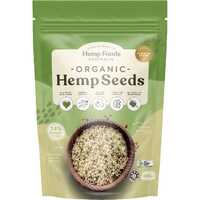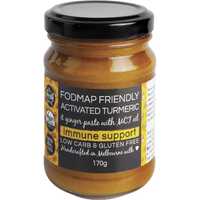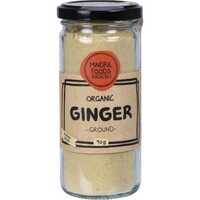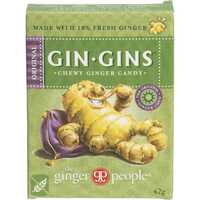People have been consuming ginger for centuries, with this unique spice popular in cooking and widely used in traditional medicine. From sweet baking dishes to savoury meals, from herbal teas to health supplements, ginger is one of the world’s most popular and versatile plants. Whether you’re looking for a specific remedy or a general health tonic, ginger is a simple and effective addition to most modern diets.
Let’s take a deep dive into ginger, including its history, nutritional profile, and health benefits. When ginger is combined with a healthy diet and balanced exercise regime, it can have a positive impact on your health and well-being.
What is Ginger?
The ginger root comes from the Zingiber officinale plant. This herbaceous perennial has been used in cooking and herbal medicine for centuries, from China and India to the Middle East and beyond. Ginger grows mostly underground, and it also includes edible leaf blades and pale-yellow flowers with purple edges. In fact, ginger is not a root but a rhizome; it just happens to grow underground, much like a potato.
Ginger is the perfect example of a cultigen, which is a plant that doesn’t exist in its wild state. Instead, ginger and other cultigens have been deliberately altered or selected by humans through a process of artificial selection. The ginger we know and love today is the direct result of domestication, with its ancient form slowly adapted to meet the needs of different civilisations. This much-loved plant is from the Zingiberaceae family, which also includes turmeric, cardamom, and galangal.
A Short History of Ginger
Ginger originates in Maritime Southeast Asia, which includes the modern-day nations of Brunei, East Timor, Indonesia, Malaysia, Philippines, and Singapore. Early evidence of the plant has been found across this region, where several species of ginger have been cultivated since ancient times. It was eaten directly and added to different foods, and it was also used to weave mats, among other applications.
Ginger also had religious uses for Asian and Pacific Island peoples. It played a role in healing rituals for spiritual protection, and it was also used to bless ships for long voyages. With a little help from the gods, ginger travelled in long canoe journeys throughout the Pacific and all the way to Hawaii. Between 5,000 and 3,500 years ago, ginger made its way to China, India, and Sri Lanka — where it eventually spread to the rest of the world.
From the Indian subcontinent, by the 1st century CE, ginger was carried by traders into the Middle East and the Mediterranean. Ginger became an important article of trade between India and the Roman Empire, and it continued to be a valuable commodity in Europe when the empire fell. Ginger has now spread across the entire world, with cultivation techniques improving over time and global transportation driving costs down.
In 2020, the global production of ginger was a massive 4.3 million tonnes. India leads the way with 43 percent of this volume, followed by Nigeria and China. In India, ginger is mostly produced through homestead farming, with male and female family members often working together using largely sustainable farming practices. As people across the world learn more and more about the wonders of ginger, this number is only likely to rise in coming years.
The Nutritional Profile of Ginger
Ginger has an interesting nutritional profile. Unlike many other popular herbs and species, it contains very few vitamins or minerals. It does contain small amounts of vitamin C and iron, but due to the small quantities involved, people don’t get many nutrients at all from it. Instead, the wonderful health benefits of this plant are due to a number of unique bioactive compounds. Ginger is widely appreciated for its distinctive taste, and its health-giving agents are just as unique.
Among other things, the health benefits of ginger are due to the inclusion of gingerol, shogaols, and zingerone. Gingerol is the predominant phenol and the most important pungent constituent of ginger oil. Shogaol is the dehydrated analogue of gingerol and ginger’s second primary bioactive compound. Zingerone is a major flavour component of ginger; and it has a number of anti-inflammatory, antidiabetic, antilipolytic, and antidiarrheal properties.
Ginger is rich in various chemical constituents, including phenolic compounds, terpenes, polysaccharides, lipids, organic acids, and raw fibres. It also functions as a powerful antioxidant, with the total level of antioxidants (3.85 mmol/100 g) only surpassed by pomegranate and some types of berries. Ginger also possesses anti-inflammatory and antimicrobial activity, and it may have both anticancer and neuroprotective properties.
The proportion of individual components in ginger products depends on many factors, including the country of origin, the commercial processor, and whether the ginger is fresh, dried, or processed. While fresh food is often preferred by health enthusiasts, dried ingredients and supplements can provide greater nutritional benefits in many situations. For example, when it comes to antioxidant activity, dried ginger provides the most benefits, followed by stir-fried ginger, carbonized ginger, and fresh ginger.
The Amazing Flavours of Ginger
Ginger has long been enjoyed for its rich, distinctive taste. As the king of culinary spices, the unique flavour of ginger is highly engaging and extremely memorable. Ginger is also incredibly diverse, and it can bring meals to life at any time of the day. Ginger works well with breakfast cereals and juices, functions as a great midday snack, and fits perfectly with a variety of savoury evening meals. Ginger also works well after dinner, from ginger teas and cold drinks to delicious cookies and cakes.
From the hero of the meal to a strong supporting role, ginger unites ingredients, dishes, and entire cuisines. The sweet heat of ginger is instantly recognisable wherever you are in the world. From Chinese stir-fries to Moroccan tagines, from Dutch gingerbread to Thai curries, many of the world’s most beloved foods would simply not be possible without ginger. Thanks to its delicious taste, ginger is also included in many commercial confectionery and health food products, including bars, balls, and bites.
The Health Benefits of Ginger
The wonders of ginger don’t end with its delicious taste. Ginger is also one of the world’s most established and powerful herbal medicines. Great for the digestive system, ideal for nausea and vomiting, and possibly beneficial for the immune system, ginger is an all-natural folk medicine with a variety of benefits. Thanks to the antioxidant and anti-inflammatory properties of ginger, it may also help to relieve pain and promote positive well-being.
The following health benefits are among the most noteworthy:
Aids with digestion and nausea
Ginger has long been taken to improve digestion, relieve nausea, prevent vomiting, and reduce flatulence. All these issues are related to gastrointestinal distress, with ginger acting as an antiemetic to improve digestive outcomes. According to a recent review of several studies, the enzymes in ginger can help to break up and expel digestive gases. Ginger has a strong effect on the enzyme pancreatic lipase, which aids digestion in the small intestine.
The carminative effect of ginger also provides other digestive benefits. For example, it helps to eliminate bloating and constipation, helps to prevent seasickness, and provides general digestive relief. Nausea and vomiting are significant issues for pregnant women, with natural ginger found to be an effective treatment in some cases.
General antioxidant and immune system support
Ginger is a powerful antioxidant, which means it’s capable of reducing the oxidative stress associated with numerous diseases. In some studies, ginger was found to decrease age-related oxidative stress markers.
According to one large review, daily ginger consumption may support wider immune system health. This study covered a range of chronic diseases, with ginger consumption associated with a decreased risk for hypertension and coronary heart disease in some people. In another study, gingerol compounds were found to possibly reduce pain along with other anti-inflammatory and analgesic effects.
May help to reduce inflammation
Ginger may help to reduce inflammation, which is the root cause of many chronic diseases. While evidence is still being gathered, data suggests that ginger may exhibit anti-inflammatory effects through the modulation of calcium levels. Gingerol and shogaols interact with a prominent heat- and pain-sensitive receptor, which may be responsible for some of these anti-inflammatory effects.
According to a 2015 review, taking ginger by mouth is “modestly efficacious and reasonably safe” for treating inflammation caused by osteoarthritis. According to another review from 2017, the phytochemical properties in ginger may also help to combat inflammation.
Whether you’re looking for a general health tonic or something for a specific digestive issue, ginger is a much-loved food with a variety of health benefits. If you want to experience the delicious taste sensations and health-giving properties of ginger for yourself, Healthy Being has everything you need. Check out our website today for ginger bars, balls, chews, teas, and supplements; or contact our friendly team for more information.


 Certified Organic
Certified Organic Vegan Friendly
Vegan Friendly  Vegetarian
Vegetarian Organic Ingredients
Organic Ingredients Dairy Free
Dairy Free Gluten Free
Gluten Free Keto Friendly
Keto Friendly

































